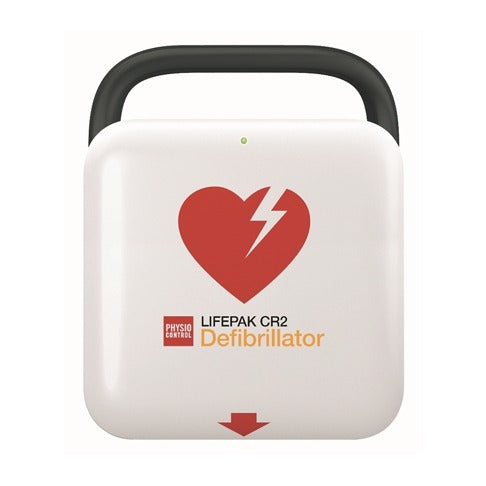What Are The Facts About AEDs In Canada
Automated External Defibrillators (AEDs) are potentially life-saving devices that have become increasingly common in workplaces, public buildings, and community spaces across Canada. Despite their growing presence, numerous misconceptions persist about these critical emergency response tools. Today, we'll address and debunk the most common myths surrounding AEDs in the Canadian context.

https://aed.ca/products/zoll-aed-3
Myth #1: AEDs Are Only for Medical Professionals
Many Canadians believe that AED machines should only be operated by healthcare professionals or those with extensive medical training. This misconception may prevent bystanders from taking action during a cardiac emergency.
The Reality: AEDs are specifically designed for use by the general public. Modern AEDs feature voice prompts, visual guides, and automated analysis systems that walk users through each step of the process. The device itself determines whether a shock is necessary, removing the burden of diagnosis from the user. In fact, studies show that untrained children as young as 9 years old can successfully operate an AED with minimal instruction.
Myth #2: You Might Harm Someone by Using an AED Incorrectly
A pervasive fear is that using an AED incorrectly could cause more harm than good to a person experiencing cardiac arrest.
The Reality: AEDs are equipped with sophisticated sensors that analyze the patient's heart rhythm before delivering any shock. The device will not administer a shock unless it detects a shockable rhythm (ventricular fibrillation or pulseless ventricular tachycardia). This built-in safety mechanism ensures that AEDs cannot harm someone who doesn't require defibrillation. Following the device's instructions minimizes any risk of improper use.
Myth #3: AEDs Are Unnecessary With Quick EMS Response Times
Some believe that in urban areas of Canada with rapid emergency medical services (EMS) response times, having AEDs on-site is redundant.
The Reality: Even in areas with excellent emergency services, the survival rate for out-of-hospital cardiac arrest decreases by 7-10% for every minute without defibrillation. The average EMS response time in Canada ranges from 8-12 minutes depending on the location—a critical window during which brain damage or death can occur. Having an AED on-site can significantly improve survival odds by providing immediate intervention while waiting for professional help to arrive.
Myth #4: Regular Maintenance of AEDs Is Too Complicated and Expensive
There's a perception that maintaining AEDs requires complex technical knowledge and significant ongoing costs.
The Reality: While AEDs do require regular maintenance, the process is straightforward and less expensive than many assume. Most modern AEDs conduct daily self-tests and provide clear indicators (usually a green/red light or display) of their operational status. Routine maintenance typically involves checking indicator lights, ensuring batteries are charged, and replacing pads and batteries according to manufacturer schedules—usually every 2-5 years. Many AED suppliers in Canada such as AED.ca offer maintenance programs that can simplify this process further.
Myth #5: Legal Liability Makes Having an AED Too Risky
Some organizations hesitate to install AEDs due to concerns about potential legal liability if the device is used incorrectly or fails to save someone.
The Reality: Canada has Good Samaritan laws across all provinces and territories that protect individuals who provide emergency assistance, including AED use. Additionally, the Heart and Stroke Foundation of Canada supports legal protection for those who use AEDs in good faith. The legal risk of not having an AED available when needed is actually greater than the risk of having one on-site.
Myth #6: AEDs Are Only Needed in Places With Elderly Populations
A common misconception is that cardiac arrest primarily affects older adults, making AEDs unnecessary in settings with younger populations.
The Reality: While age is a risk factor for cardiac events, sudden cardiac arrest can affect people of all ages, including children and young adults. Genetic heart conditions, undiagnosed heart defects, and commotio cordis (impact to the chest during sports) can cause cardiac arrest in younger individuals. Additionally, environments where physical exertion occurs—such as schools, sports facilities, and recreation centers—benefit greatly from having AEDs available regardless of the age demographic they serve.
Myth #7: AEDs in Canada Are Prohibitively Expensive
The perception that AEDs are too costly for small businesses or community organizations prevents many from considering this life-saving investment.
The Reality: While AEDs do represent an initial investment (typically $1,899-$2,500 CAD), many options exist to make them more accessible. These include grant programs, cost-sharing arrangements, leasing options, and refurbished units. Additionally, the Heart and Stroke Foundation and other organizations offer programs to help communities acquire AEDs. When viewed as a long-term investment in safety—with devices lasting 8-10 years with proper maintenance—the annual cost becomes quite reasonable.
Myth #8: Canadian Weather Makes Outdoor AEDs Impractical
Given Canada's extreme temperature variations, some believe that AEDs cannot function reliably in outdoor settings.
The Reality: While standard AEDs have operational temperature ranges (typically 0°C to 50°C), specialized outdoor cabinets with heating and cooling systems are available for Canadian weather conditions. These cabinets ensure that the AED remains within its optimal temperature range year-round, making outdoor placement entirely feasible even in challenging Canadian climates.

https://aed.ca/products/stryker-physio-cr2-semi-auto-english-wifi
Conclusion
Understanding the facts about AEDs is crucial for making informed decisions about their implementation in workplaces, public spaces, and communities across Canada. These life-saving devices are more accessible, user-friendly, and practical than many Canadians believe.
By dispelling these common myths, we hope to encourage more widespread adoption of AEDs throughout Canada. In a cardiac emergency, immediate access to an AED—combined with CPR—provides the best chance of survival. The question shouldn't be whether you can afford to have an AED; rather, it's whether you can afford not to have one when it matters most. Contact AED.ca today with any questions.
Remember: When it comes to sudden cardiac arrest, every second counts, and having an accessible AED could make the difference between life and death. #stopneedlessdeaths
Aed aed machine aed defib aed cost where to buy an aed in canada aeds aed for sale aed in canada aed near me aed company near me aed sale aed.ca





